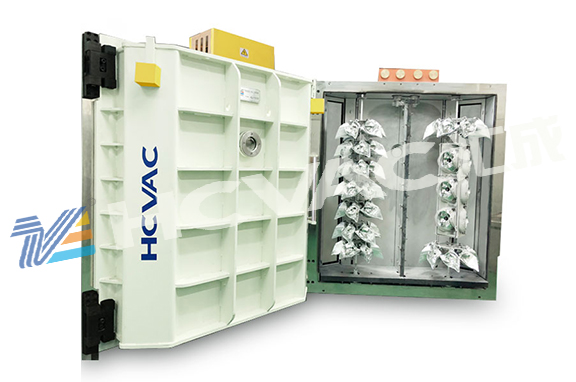The main application of AR coated glass for PVD coating machine is to coat the surface of ordinary tempered glass, thereby improving the light transmittance of the tempered glass surface and realizing the function of easy cleaning. It also extends the life of the glass. AR coated glass is currently mainly used in solar cell modules, solar thermal, construction, automotive glass and other fields.

There is no front glass in front of the general LCD monitors and LCD TVs. The surface is easily damaged by scratches, and the viewing angle is small. After adding an AR glass, these shortcomings will be overcome. Mainly used for display device protection screens such as LCD TVs, PDP TVs, laptop computers, desktop computer displays, high-end instrument panels, touch screens, photo frame glass and other electronic products that increase transmittance and reduce reflectivity.
Ultra-white embossed glass is mainly used as monocrystalline silicon and polycrystalline silicon solar photovoltaic cell daylighting panels for solar thermal and photoelectric conversion systems. In order to make the electrode plate fully absorb solar energy and improve the photoelectric conversion efficiency of silicon cells, it must have the lowest possible Reflectivity, the highest possible sunlight transmittance. According to the principle of diffuse reflection, the texturing treatment on the surface reduces the reflectivity of light to a certain extent, and its own low iron content formula also greatly reduces the absorption rate of solar energy. If a layer of anti-reflection and anti-reflection coating is plated on this basis, it can have a very high solar transmittance under various incident conditions and prevent light pollution, achieving a relatively high solar energy conversion efficiency.
The anti-reflection coating glass is obtained after the
PVD coating machine coats the anti-reflection coating on the surface of ordinary ultra-white glass and then undergoes tempering treatment. It can effectively reduce the solar reflectance on the glass surface, thereby increasing the energy transmittance, and ultimately improving the power generation efficiency of the solar cell. It is the latest technology and product in the world. Photovoltaic anti-reflective glass increases the visible light transmittance by 2.5%, which in turn can increase the conversion efficiency of crystalline silicon photovoltaic modules. A 1% conversion efficiency difference means a cost difference of about 6-7%.



